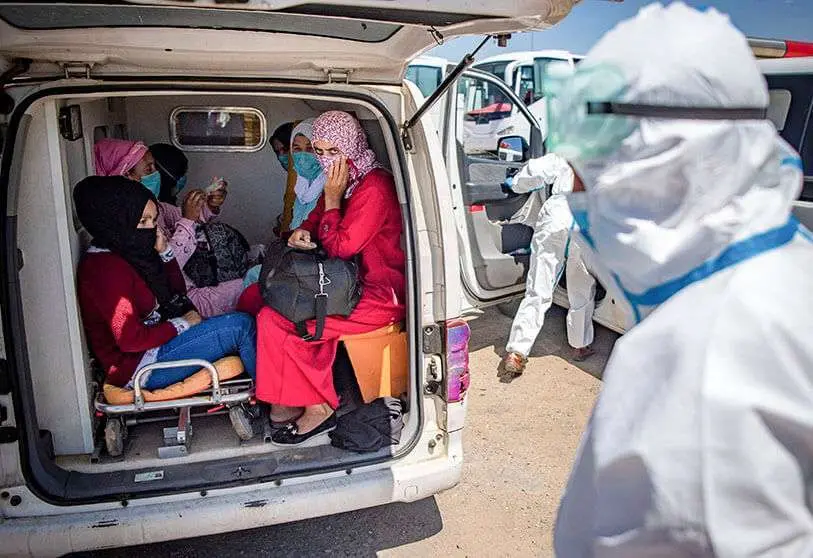Morocco between deconfinement and coronavirus outbreaks

The Moroccans would have lived through the longest confinement on the planet. Severe measures accompanied this period of social estrangement and the cessation of economic activities. Since 20 March, the state of health emergency in Morocco has been continually renewed. A few days ago, an extension was announced until 10 August, which provoked the anger of the Moroccans who were unable to contain their anger or continue to live in confinement and without work. The government quickly reversed this decision. The date of 10 July arrived to calm spirits and ease tensions. Positive signs arrived to confirm the relaxation of containment measures. Casablanca, one of the biggest outbreaks of the epidemic, was given the green light under the name of Zone 1. The main cities, including the economic capital, Casablanca, and the administrative capital, Rabat, were part of Zone 2, where travel restrictions had to be respected.
Since Wednesday, 24 June, at the stroke of midnight, all of Morocco has moved to Zone 1, except Tangier, Asilah, Marrakesh, Larache and Kenitra, pursuant to a joint decision of the Ministry of the Interior and Health. Going to the hairdresser, jogging or having access to green spaces is now allowed and even made possible and circulated without a special permission and without the need for testing. A great relief for Moroccans who have been living in a very difficult psychological and economic situation for 3 months. That said, all meetings are still forbidden, mosques, cinemas and theatres are closed, and restaurants and cafes are limited to take-away orders.
Overall, Morocco has managed the crisis well since the first cases were identified. The monarchy was often cited as an example when Europe suffered from a lack of masks and organization. Morocco has also been treated with hydroxychloroquine and has one of the lowest infection rates on the continent. In this country of 35 million people, 213 deaths have been recorded so far.
As the country prepares to lift restrictions, there are two outbreaks of contamination in soft fruit packing plants. More than 500 new cases of contamination in the Kenitra region have upset the health balance in Morocco, which has so far managed to maintain it. Women farmers who were in the front line paid a high price for this epidemic. An investigation has been opened to examine their working conditions. It is clear that the lack of respect for safety instructions was the origin of this group. Kenitra became, in a very short time, the new home of COVID-19.
All employees have been investigated and the investigation is still ongoing, said Interior Minister Abdelouafi Laftit. Since Sunday, a field hospital has been set up to receive the 700 contaminated people and isolate them. The authorities have closed down all red fruit processing units and Rabat has tightened restrictions.
This resurgence, which is accompanied by the closure of factories, follows a multi-sector economic crisis whose contours are being confirmed these days. Morocco is expecting a 5% decline in its GDP. The tourism sector has fallen. In an interview with the Economist, Abdellatif Kabbaj, president of the National Confederation of Tourism (CNT), recalls that Morocco has accumulated a great delay in tourism at a time when "competing tourist destinations are working towards the resumption of their activity by communicating, first of all, on the opening of their borders and the reopening of tourist establishments and sites". "Tunisia, Greece and Turkey are in the process of filling their order books". Tourism contributes to 7% of the kingdom's GDP. The recovery is slow and will not take place before 2021 according to sector specialists.
In 2019, Morocco welcomed a 5% increase in the number of visitors compared to the previous year. Hopes were high for 2020 before the virus turned everything upside down. Marrakech and Agadir were in the lead. But today the ochre city is in the red and doesn't seem ready to offer the magic of its riads to tourists.
Another disappointment of this crisis: the Moroccans who were stranded abroad for three months and had to spend the month of Ramadan far from their home and their families. Rabat began the repatriations two weeks ago, but the returns are taking place at a turtle's pace. For the time being, air transport has been established to Spain and Turkey. There are still tens of thousands of people who have not returned, but so far no resumption of international flights has been announced.

